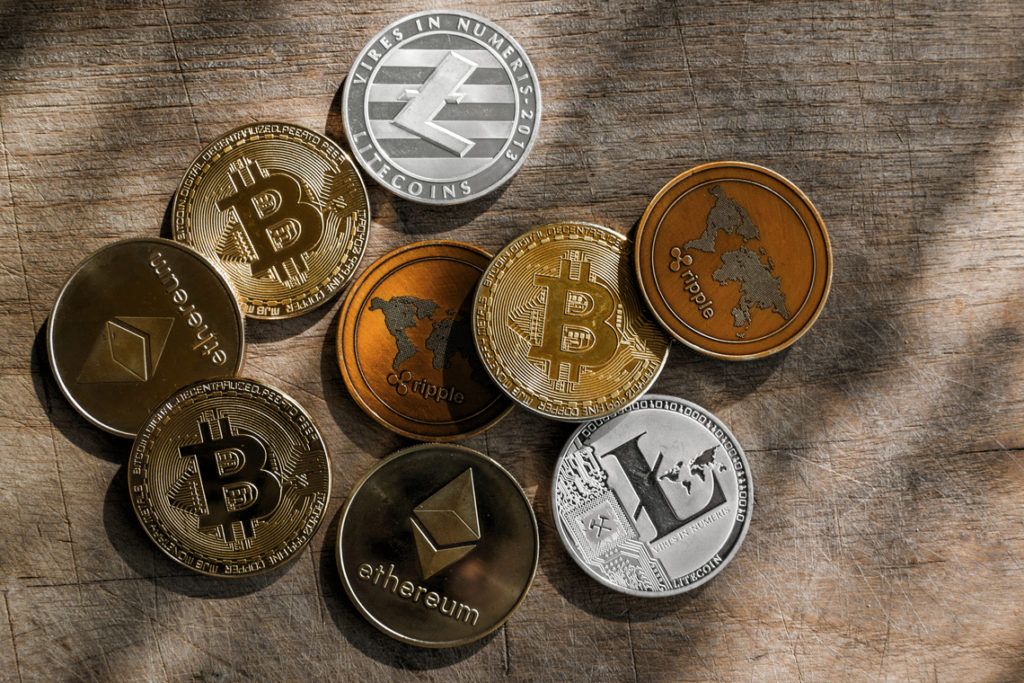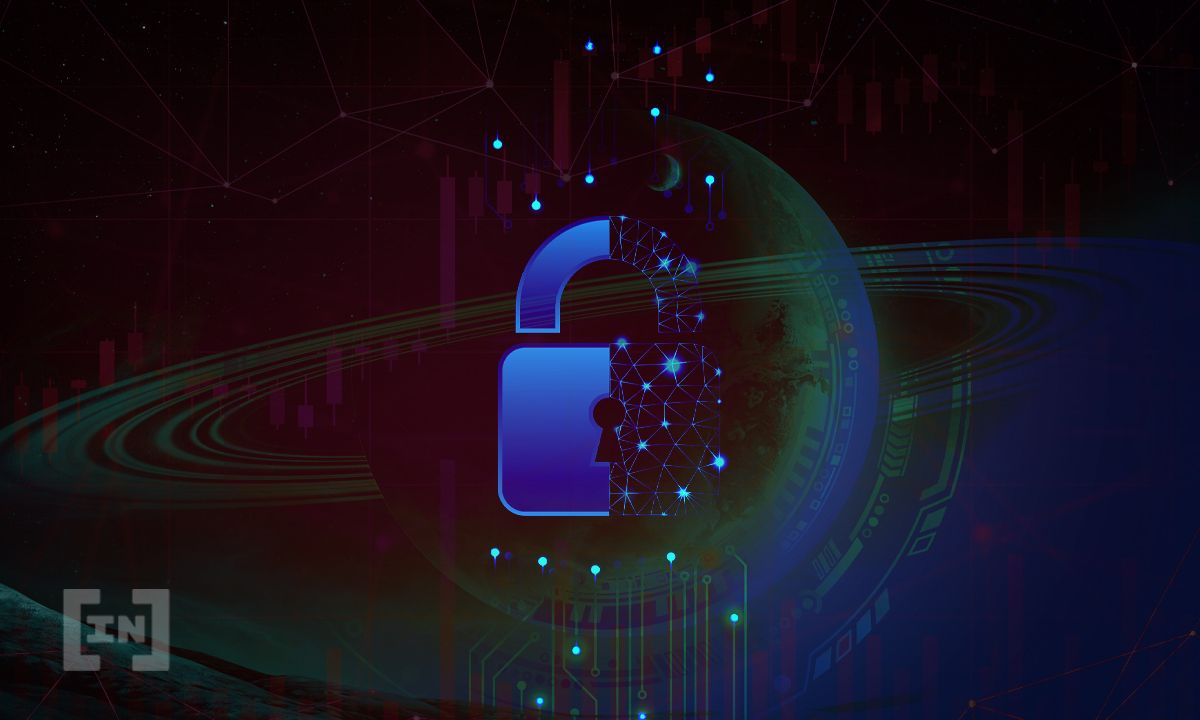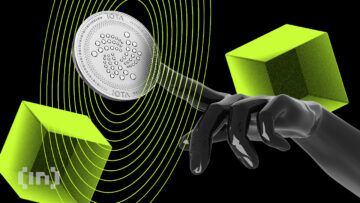Recently, cryptocurrencies have become one of the hottest topics around, with assets like Bitcoin, Dogecoin, and Ethereum in the news every day along with constant coverage of the crypto industry. But, what is cryptocurrency? How does it work? As a beginner, the industry can be difficult to understand and sometimes overwhelming.
Through our learn section, we aim to educate those interested in the industry on the capabilities of crypto, blockchain technology and the importance of crypto in a tech-focused world. Our learn section contains over 200+ informative articles and a mountain of information for you to study and learn from.
In this beginners guide, we’re going to cover the very basics of cryptocurrency and introduce the most essential aspects of crypto to help get your crypto journey started the right way. So, let’s get started!
In this Article:
- What is Cryptocurrency?
- Trading and Investing Essentials
- Earning Passive Income
- Securing Your Assets
- Essential learning resources
What is Cryptocurrency?
Cryptocurrency is digital money in form of digital assets that can be traded, sent, and used by anybody and anywhere in the world. Cryptocurrencies have no physical form and are fully digital.
They differ greatly from traditional forms of currency or your favourite online payment provider. In fact, they’re way more interesting than those boring old platforms that you’re still using!
Unlike traditional forms of currency or your favourite in-game token, this ‘digital currency’ uses cryptography to secure and validate transactions on a blockchain, protect assets and make cryptocurrencies an extremely secure form of currency.

Many existing online payment gateways are owned by organizations, meaning they have to be given permission from you to transact and handle your funds. Essentially, they hold your money for you, meaning every time you want to spend your money, you need to ask them.
With cryptocurrencies, there’s no middle-man or organization in control of your funds. Only you.
This means you can send crypto to anybody, anywhere, at any time you want. You could even become your own bank. The possibilities are seemingly endless. You can even book a holiday using cryptocurrencies now.
Cryptocurrencies also have some other pretty incredible real-world uses, including:
- Send non-cash remittances to anybody anywhere in the world.
- Earn passive income on your assets
- Borrow money without a third-party
- Validate your identity or ownership over a specific asset.
When using cryptocurrency, there’s no need for log-in information or a collection of unused accounts. All you need is a few easy-to-use apps and platforms to start using cryptocurrencies.
A Brief History of Cryptocurrency
Cryptocurrency is a combination of cryptography and currency.
Cryptography comes from the ancient Greek words kryptós “hidden” and graphein, “to write”. In very basic terms, it’s about sending hidden messages that can only be read by the intended recipient. The use of cryptography provides users with secure communication, protected transactions, controlled unit creation and verified transfers.
Since then, there have been thousands of others created, with more popping up every month. Although many share the same core characteristics, new transaction processes, and innovative ways to solve problems are continually being developed. If you’re interested in more in-depth knowledge into how cryptography works with crypto, this article on hashing has you covered.

How are Cryptocurrencies Created?
In simple terms, cryptocurrencies are sequences of encrypted bits that are built over cryptographic functions and stored over a network. Most early cryptocurrencies such as Bitcoin and Litecoin create new tokens through mining through a process known as Proof of Work. This is a process where miners solve complex mathematical problems and are rewarded for their efforts.
Miners also verify transactions. When the assets move from one account to another, a miner will confirm the transaction, every node has to add it to their respective database, and it becomes part of the blockchain. A transaction is only considered secure once it’s been added to the blockchain.
Mining cryptocurrencies is now very popular and remains a hot topic in the crypto industry. Here’s a few more resources that can help you understand mining and proof of work a bit more.
- What is Cryptocurrency Mining?
- How Much Electricity Does Bitcoin Mining Use?
- An Introduction to Free Bitcoin Mining
Also, if/when you’re interested in starting your own mining empire, our beginners guide to CPU mining is a good place to start. ⛏️
Other cryptocurrencies are created via a process called Proof of Stake. Through this, no coins are mined; all of the coins are created and minted at the inception of a project. Validators stake their coins on a network and are rewarded with transaction fees and rewards for their participation in validating and securing a blockchain.

A blockchain is a ledger that records all of the transactions and validates the ownership of all the units. Copies of the blockchain are stored across the network in nodes. This process makes transactions extremely secure and eliminates fraud, such as double spending or spam transactions.
The most well-known Blockchain is Ethereum. On the Ethereum Blockchain, alongside the many other blockchains that know exist, users can create Smart Contracts. Smart Contracts are essentially code that automatically executes all or parts of an agreement and is stored on a blockchain-based platform.
Blockchains can be a little difficult to understand, so here’s a few more resources to help you understand them more.
- Beginners Guide to Blockchain
- How Businesses Can Use Blockchains
- How Blockchains Store Transactions
- Tokenization on a Blockchain
- The Top Blockchain Solution Companies

So, who created Bitcoin?
The most popular cryptocurrency is undoubtedly Bitcoin. It’s the number one asset by market cap and is the one crypto, alongside Dogecoin, that everybody knows and recognises.
Despite its popularity, little is known about the inventor of Bitcoin. What is known is that Bitcoin was created by an anonymous entity that works under the pseudonym of ‘Satoshi Nakamoto’. Whether Satoshi is a person, a group, a government organisation or something more extraterrestrial is unknown.
Following the publication of the infamous Bitcoin whitepaper in 2008, Bitcoin was released in 2009. Since then, it’s achieved cult status and has grown to become an integral part of the push towards greater financial freedom and privacy.
Being the most popular coin, there’s a LOT to learn about Bitcoin and its almost endless capabilities. Here are some insightful resources that can help you understand Bitcoin a bit more:
*Psst* There’s even a way to earn free Bitcoin. See how much you can earn whilst you’re reading our guide 😉
Although Bitcoin was the first crypto to exist, many other cryptocurrencies are now in circulation. These assets are usually referred to as “Altcoins”. Despite all being cryptocurrencies, they all do vastly different things.
The popular use cases for cryptos include privacy, speed, security, interoperability and greater control over funds. If you want to check out some other cryptocurrencies, here are some of our favourite resources on altcoins:
The Advantages of Cryptocurrencies
Before we move on, there may be one question running through your mind — Why should I use cryptocurrencies?
Despite all of the use-cases and hype surrounding them, there need to be certain advantages to using them over tradtional fiat currencies and legacy banking systems, right? It works, and it’s already established. It does everything you need it to, so why use something else?
Here are some of the advantages of using cryptocurrencies —
- No need for a bank or third party — Yes, this means no terms of service, or guarantees. This also means users can send and receive crypto without providing any identification or personal details.
- Fully decentralised — Cryptocurrencies are fully decentralised and not controlled by a government or central authority. This means that anyone, anywhere can own and use it. This makes cryptocurrency incredibly useful for users in unstable countries.
- Top-tier security — Cryptocurrencies are extremely secure and difficult to hack. The nature of the assets alongside ever-emerging security measures mean your assets remain safe and stable on exchanges and in wallets.
- Low transaction fees — Transaction fees are low across all blockchains and usually cheaper than the costs of moving other currencies via traditional methods such as wire transfers or SWIFT payments.
- Borderless transfers — With cryptocurrencies, anyone can transfer assets anywhere in the world due to the borderless nature of the internet and the open access to blockchain technology.

Now that we know the basics behind cryptocurrencies and what they do, let’s dive right into the basics of trading and investing.
What are you waiting for? Let’s get started!
Trading and Investing Essentials
As the industry continues its rapid growth, blockchain networks and cryptocurrencies are already used in a lot of different areas and provide various use-cases.
When it comes to trading cryptocurrencies, things are slightly different. Traders use exchanges to actively trade assets to generate profits. Trading usually entails a shorter-term approach and strategy to generating profit, meaning they open and close trades on a regular basis.
In cryptocurrencies, there are two types of analysis;
Technical analysis is used by short-term traders whilst fundamental analysis is used in longer-term investing, which we’ll cover in the next section. Technical analysis uses price history, charts and available market data to determine whether an asset will go up or down in price.

Traders often use exchanges such as Binance to actively trade as they offer a reliable service, an intuitive platform to trade on, accurate pricing and a large selection of order types and tools to help maximize profits.
Trading is often glamourised in the industry but it’s much, much harder than it looks. It requires time, patience and a clear mind to succeed. There’s a lot to cover when it comes to trading, so we’ll try to cover as much as possible using our extensive resources.
We know how easy it is to dive in at the deep end and get started with trading. 🏊♂️ However, always remember, trading is hard. If you’re really eager to start, our guide on how to trade profitably is a good resource for beginners.
If you’re still wanting to learn more, here’s some articles to help you get started trading:
There’s also some more advanced aspects of trading that you should be aware of, including the platforms to use, the channels to watch and the right people to follow to guide you in the right direction:
- The Best Trading Platforms
- The Best Mobile Trading Apps
- How to Scalp Trade
- How to Day Trade
- The Best Traders to Follow
When you feel you know everything about trading, it’s time to look at the higher timeframe aspect of cryptocurrencies — Investments. Let’s discover what investing is about and understand how to do it properly.
Investing Basics
The basics of crypto investing involve looking at assets that have strong fundamentals.
Right now, you’re probably asking — What fundamentals do I need to look for?
The main fundamentals that should generally be considered are:
- The project
- What does it do?
- What problem does it solve?
- Does the project have a working product?
- The team
- How transparent is the team?
- How reputable are the team members?
- Do the team communicate openly regarding their project?
- The community
- How many people have invested in the project?
- What is the reputation of the project?
- Is the project well-supported across multiple channels?
Of course, these are just the basics of what needs to be considered. It might seem like a lot to think about, but high-quality projects worth investing in answer all of the questions and provide much, much more.

The best projects are also mainly available on leading exchanges such as Binance, Kraken and Coinbase as they’re often vetted before being listed. Although exchanges are often the safest and most reliable way to invest in cryptocurrencies, there are now some novel ways to start investing.
You can even use a Bitcoin ATM to purchase Bitcoin and other leading cryptocurrencies now. What will be next!?
When investing in projects, you’re usually investing on a medium to long term basis. This means the projects you invest in should have a working product or an upcoming launch, future updates and integrations in the pipeline, high liquidity on exchanges and stable price action.
If you’re looking for more information on how to choose the right projects to invest in, look no further —
- Fundamental Analysis Guide
- The Scams to Avoid Investing In
- Picking the Right Exchange for You
- The Best Exchanges to Trade On
We’ve also got some insightful guides on how to buy your first cryptocurrency in a few simple steps. We’re going to cover three of the most popular cryptocurrencies that make for solid, stable long-term investments —
Now that we understand the difference between trading and investing, we can move onto our next section which covers how to earn passive income and yield returns from the assets that you have invested in.
Earning Passive Income
Now that you’re up to speed on the basics of trading and investing, it’s time to put your newly acquired assets to work.
The most popular platforms use Decentralized Finance (DeFi) to provide users with rewards and passive income from their assets. They allow you to earn by simply securing and holding your assets on a particular platform. Easy, right?

You can also take full advantage of proof of stake assets and the earning potential provided by staking your coins. Staking means getting rewards for securing your assets on a network. If you invest in a coin that supports staking like Cardano or Polkadot, you can acquire more coins passively over time.
Now, even leading exchanges and wallets even provide integrated staking services for you to start earning passively!
Yield farming has also exploded in popularity recently due to increased interest in maximizing returns from your assets. Although there’s a lot to learn regarding yield farms and their potential risk/reward, they can provide an easy way for you to earn generous yield rewards for securing your assets on a platform.
The two most popular networks for yield farms are Binance Smart Chain and Ethereum. So when you’re ready to start earning passively on your assets, you know exactly where to begin 😉
If you’re not ready for earning passive income and simply want to hold and secure your assets, our next section has you covered.
Securing your Assets
Security in cryptocurrency is paramount, as there are now more scams than ever ready and waiting to steal your assets and your data. Your assets should be secured in a crypto wallet, which provides a safe and reliable way to store your assets.
Crypto wallets come in many shapes and sizes, with mobile, desktop and hardware wallets available for almost all coins on the market. The best crypto wallets all provide leading security measures and ensure your assets remain safe and sound.

It also pays to be aware of the many scams and intricate schemes out there that can steal your assets. If you’re ever sceptical about a platform, we’ve compiled a handy list of the most reputable Cryptocurrency tools to use so you can be sure you’re using the most trusted platforms available.
Essential Learning Resources
At BeInCrypto, we want to provide you with all the tools you need to succeed on your Crypto journey. Through our Learn section, we provide you with everything you need to know and can answer some of your burning questions regarding cryptocurrencies.

One of our best resources is our social media channels, including Twitter, Facebook and Instagram. They’re the best way to stay up-to-date with everything happening with crypto and make you a crypto expert in no time.
You can use our YouTube channel for the latest guides, updates and news about cryptocurrencies. Our Education section covers all aspects of crypto and can help you understand the basics of the industry.
You can also take advantage of our free Telegram channel, which is home to our incredible trading community that can give you a real edge with your learning journey.
Wrapping Things up
We’re sure after reading this guide that you’ve got a better understanding of cryptocurrencies and how they all work. Via our Learn section, you’ll find hundreds of articles that can take you from a crypto beginner to an expert in no time.
You should also check out our incredible BeinCrypto Academy, where you’ll learn how to trade and further develop your crypto knowledge using our range of free online courses, webinars, and seminars.
Good luck on your crypto journey!


